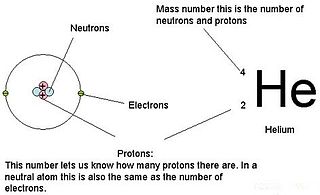അണുസംഖ്യ
ന്യൂക്ലിയസിൽ കാണപ്പെടുന്ന പ്രോട്ടോണുകളുടെ എണ്ണം From Wikipedia, the free encyclopedia
Remove ads
രസതന്ത്രത്തിലും ഊർജ്ജതന്ത്രത്തിലും ഒരു അണുവിന്റെ കേന്ദ്രത്തിൽ (ന്യൂക്ലിയസ്) കാണപ്പെടുന്ന പ്രോട്ടോണുകളുടെ എണ്ണത്തെ അണുസംഖ്യ (അറ്റോമിൿ നംബർ) എന്ന് പറയുന്നു. Z എന്ന അക്ഷരം കൊണ്ടാണ് ഇതിനെ സാധാരണയായി സൂചിപ്പിക്കുന്നത്. ഒരോ വ്യത്യസ്ത മൂലകത്തിനും വ്യത്യസ്തമായ അണുസംഖ്യ ഉണ്ടായിരിക്കും. വൈദ്യുതപരമായി നിർവീര്യമായ ഒരു അണുവിന്റെ അണുസംഖ്യയും അതിലെ ഇലക്ട്രോണുകളുടെ എണ്ണവും തുല്യമായിരിക്കും.


അണുസംഖ്യയുമായി വളരെ ബന്ധപ്പെട്ട ഒന്നാണ് പിണ്ഡസംഖ്യ (മാസ് നംബർ). ഒരു അണുകേന്ദ്രത്തിലെ പ്രോട്ടോണുകളുടേയും ന്യൂട്രോണുകളുടേയും എണ്ണങ്ങളുടെ തുകയാണ് മാസ്സംഖ്യ.
Remove ads
Wikiwand - on
Seamless Wikipedia browsing. On steroids.
Remove ads

